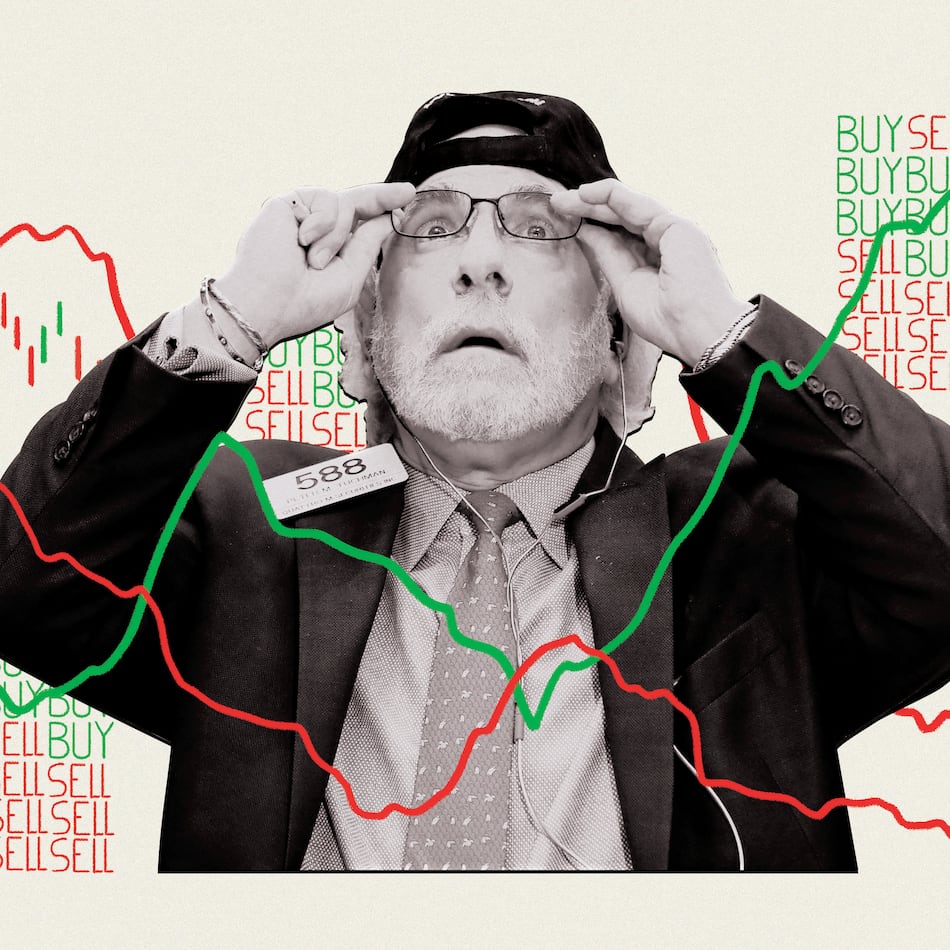Wall Street stumbled hard and ugly Thursday as more grim news piled up, revealing the grave economic damage being caused by the coronavirus outbreak around the world.
All three major indexes started and ended the day in the red.
The Dow Jones Industrial Average closed down 288.14 or 1.17% to 24,345.72.
The NASDAQ composite index was down 25.16 or .28% to 8,889.55.
The S&P 500 was down 27.08 or .92% to 2,912.43.
The S&P index still wound up 12.7% higher in April, its biggest monthly gain since 1987.
A day earlier stocks soared amid optimism around a potential new treatment for coronavirus, but the push didn’t last into a second day.
Although the market has looked bullish at times over the past month, any rallies seen during the outbreak have been fleeting, with investors still uncertain about the future, but still clinging to hope that government stimulus efforts will hold up the economy until business returns full speed.
April ended as the Federal Reserve and Congress announced aggressive new measures to help the economy weather the fallout from the widespread business shutdowns and stay-at-home guidelines put in place to slow the pandemic.
Another 3.8 million people applied for unemployment benefits last week, and the European economy contracted by a record 3.8% in the first three months of the year. The U.S. government also reported that consumer spending plunged 7.5% in March.
Weekly jobless claims piled up to reach 30 million since the start of the pandemic, a devastating toll on the world’s largest economy.
New data Wednesday from the National Association of Realtors also showed pending home sales dropped 20.8% in March.
The slew of bad indicators is forcing investors to be realistic and question how fast stocks have rebounded despite the gradual pace of resuming business activity.
On Wednesday, Wells Fargo investment banker Adam Taback described the current state of the stock market as “overly optimistic.”
The U.S. economic crisis is shaping up to be the worst since the 1930s. Meanwhile new data came out showing that the European economy contracted by a record 3.8% in the first three months of the year.
An upswell of hope about curbing the pandemic was so strong that investors shrugged off a report showing the U.S. economy shrank at a 4.8% annual rate in the first three months of the year.
The experimental drug remdesivir was reported to be effective against the new coronavirus in a study run by the National Institutes of Health. The nation’s top infectious diseases expert said the drug reduced the time it takes patients to recover, raising hopes that life around the world may eventually tiptoe back toward “normal.”
Nations around the world have laid out plans to relax restrictions keeping people at home and businesses bereft of customers. Any new treatment for COVID-19 could also lower the dread so prevalent among households and businesses around the world.
Benchmark U.S. crude oil rose $2.20 to $17.26 a barrel in electronic trading on the New York Mercantile Exchange. It rose $2.72, or 22%, to settle at $15.06 a barrel on Wednesday. Brent crude oil, the international standard, rose $2.21 to $26.44 a barrel.
» TUESDAY’S CLOSE: After roaring start, US stocks fall back to earth as investors retreat
World stocks also fell back on Thursday following the release of worse-than-expected data showing Europe's economy suffered its worst ever quarterly contraction, while jobless claims continued to surge in the United States.
Europe
European markets were also lower.
The 19-country eurozone economy contracted by a quarterly rate of 3.8% in the first quarter, the deepest slump since records began in 1995, as business activity was frozen by shutdowns aimed at curbing the spread of the coronavirus.
The European Central Bank responded by stepping up its help for the economy, providing cheaper loans to banks and more liquidity.
France’s CAC 40 stock index was down 0.6% at 4,646 while Germany’s DAX lost 0.9% to 11,009. Britain’s FTSE 100 slipped 1.5% to 6,026. U.S. shares were steady, with the future contracts for the Dow industrials and the S&P 500 future both down 0.5%.
The bleak European numbers put paid to a rally in the U.S. and Asia that was driven by optimism about a possible treatment for the coronavirus.
Asia
Japan’s benchmark Nikkei 225 surged 2.1% to finish at 20,193.69, while Australia’s S&P/ASX 200 gained 2.4% to 5,522.40. The Shanghai Composite added 1.3% to 2,860.08.
India’s Sensex climbed 2.4% to 33,494.89. Shares also rose in Taiwan and Southeast Asia.
Markets in South Korea and Hong Kong were closed for holidays. Many other markets will be closed on Friday for May Day.
China’s manufacturing activity weakened in April as the coronavirus pandemic clobbered global consumer demand, hampering Beijing’s efforts to revive the world’s second-largest economy.
Surveys by a Chinese magazine and an official industry group showed activity slipped back after rebounding in March following the closure of much of China’s economy to fight the virus. A sub-measure for exports plunged.
China became the first major economy to reopen factories in March after the ruling Communist Party declared victory over the outbreak. But the United States, Europe and other major markets have yet to lift controls that are depressing consumer spending.
The dollar inched down to 106.62 Japanese yen from 106.67 yen Wednesday. The euro was little changed at $1.0868 from $1.0875.
— Yuri Kageyama was the principal writer of this report for The Associated Press. Compiled and edited by ArLuther Lee for The Atlanta Journal-Constitution.
The Latest
Featured

